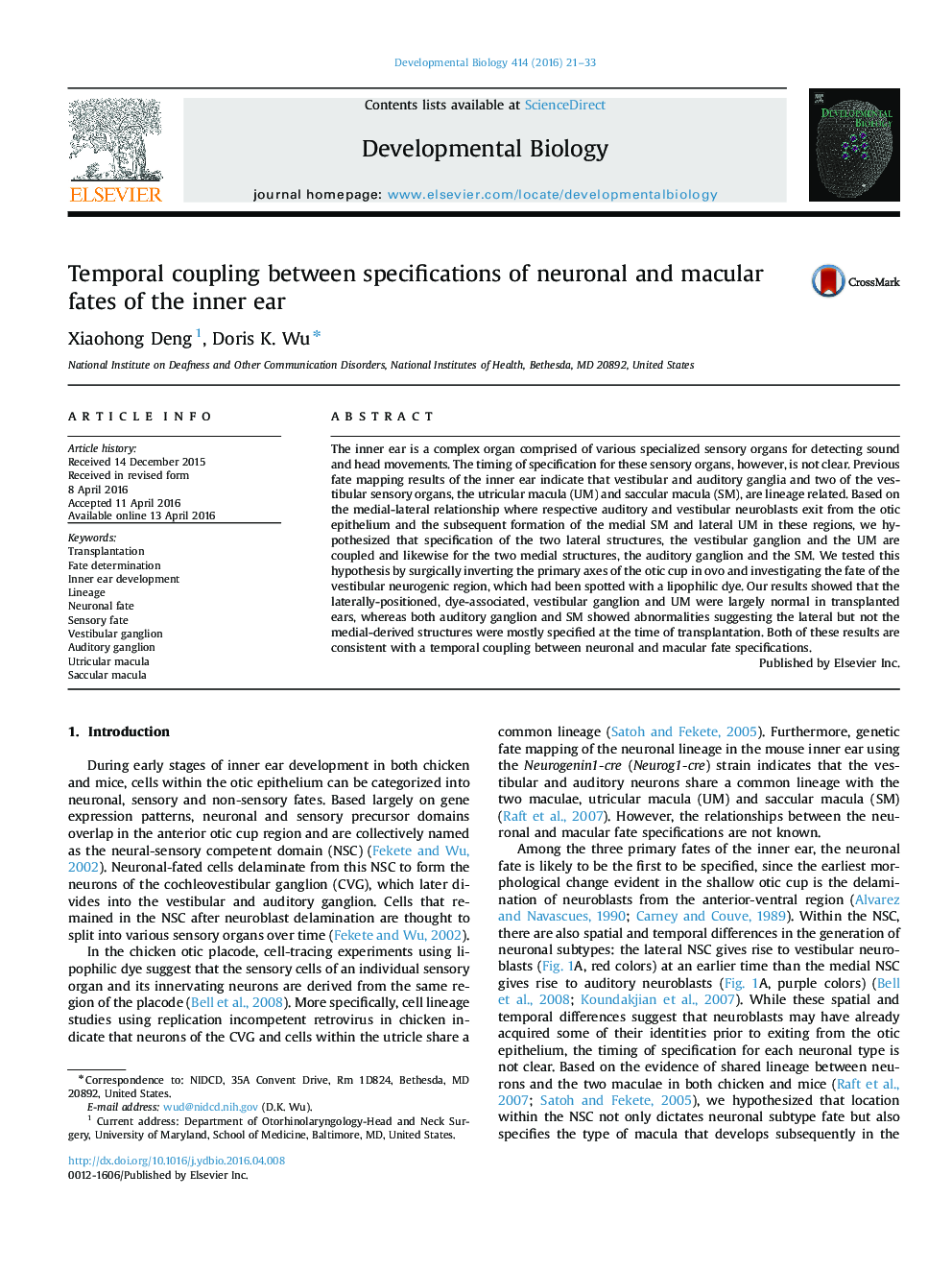| Article ID | Journal | Published Year | Pages | File Type |
|---|---|---|---|---|
| 10931162 | Developmental Biology | 2016 | 13 Pages |
Abstract
The inner ear is a complex organ comprised of various specialized sensory organs for detecting sound and head movements. The timing of specification for these sensory organs, however, is not clear. Previous fate mapping results of the inner ear indicate that vestibular and auditory ganglia and two of the vestibular sensory organs, the utricular macula (UM) and saccular macula (SM), are lineage related. Based on the medial-lateral relationship where respective auditory and vestibular neuroblasts exit from the otic epithelium and the subsequent formation of the medial SM and lateral UM in these regions, we hypothesized that specification of the two lateral structures, the vestibular ganglion and the UM are coupled and likewise for the two medial structures, the auditory ganglion and the SM. We tested this hypothesis by surgically inverting the primary axes of the otic cup in ovo and investigating the fate of the vestibular neurogenic region, which had been spotted with a lipophilic dye. Our results showed that the laterally-positioned, dye-associated, vestibular ganglion and UM were largely normal in transplanted ears, whereas both auditory ganglion and SM showed abnormalities suggesting the lateral but not the medial-derived structures were mostly specified at the time of transplantation. Both of these results are consistent with a temporal coupling between neuronal and macular fate specifications.
Keywords
Related Topics
Life Sciences
Biochemistry, Genetics and Molecular Biology
Cell Biology
Authors
Xiaohong Deng, Doris K. Wu,
